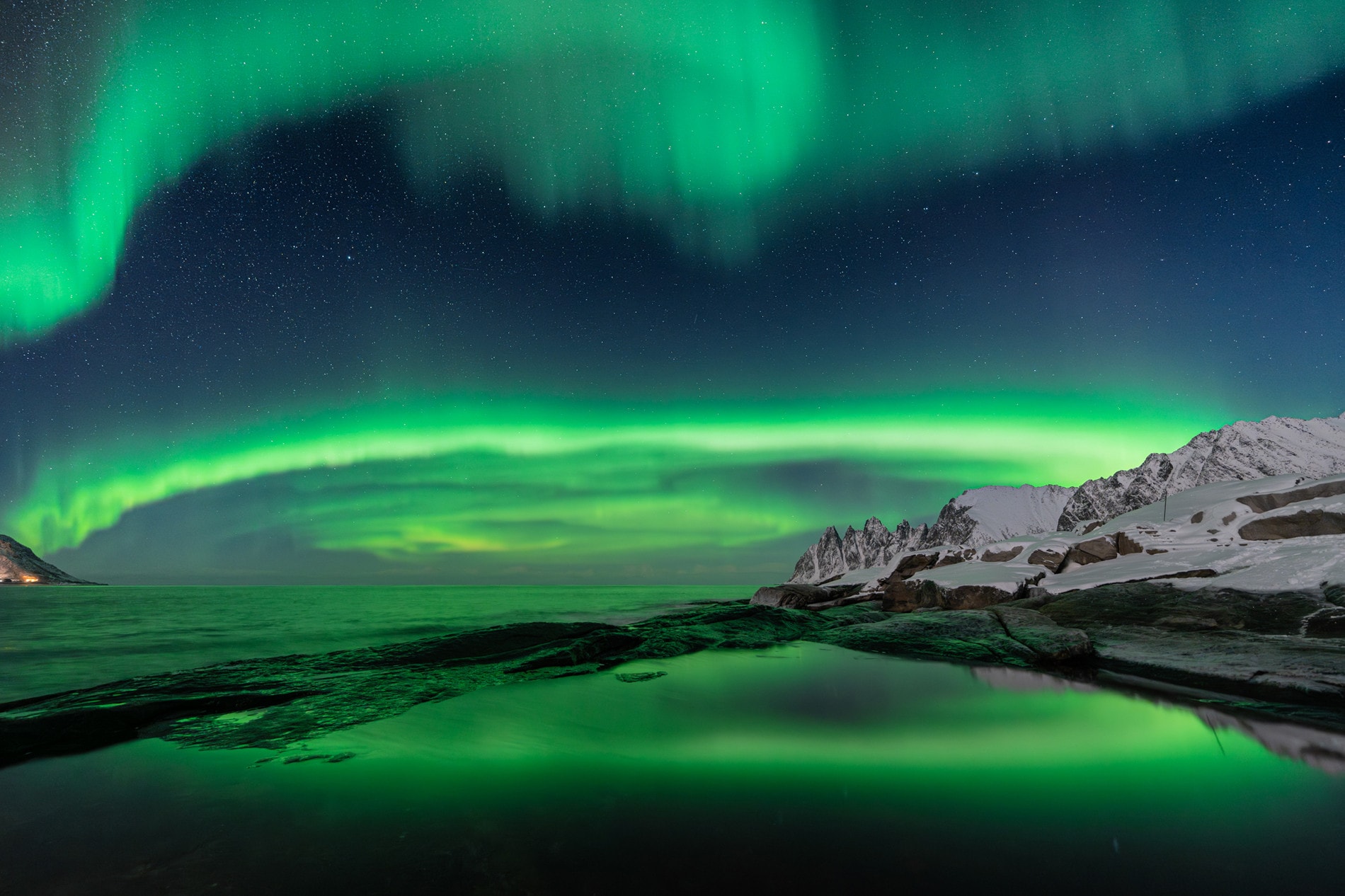Arriving in Europe on the last day of 2024, Mr. Viet and a group of Vietnamese tourists celebrated New Year's Eve on a plane for the first time. During their 7 days here, they also successfully hunted for the picturesque aurora borealis.

On the last day of 2024, Mr. Bui Xuan Viet (Dong Nai) and a group of Vietnamese tourists "went abroad" to Europe to welcome the new year in their own way.
On the flight from Ho Chi Minh City to northern Norway, for the first time they welcomed New Year's Eve on a plane, feeling the meaningful moment of the new year's transition.
“This is my fourth time in Norway but it feels completely different from my previous trips.
On this trip, our goal is to hunt for the aurora and take beautiful pictures of the winter scenery here," said Mr. Viet.


According to the photographer from Dong Nai, Norway is one of the most beautiful countries in the world with a "unique" coastline, including many mountains next to the sea and long fjords, the water surface is calm, reflecting like a mirror.
In particular, this is also the place to observe the most beautiful aurora borealis (aurora occurring in the northern hemisphere) with glowing blue or red-purple silk ribbons, attracting many travel enthusiasts and photographers around the world every year.
When he learned that the sun would begin to enter the dark zone and radiation activity would peak in 20 years from 2024-2025, Mr. Viet planned to go to Norway.
In March 2024, he set foot in Norway and successfully hunted the aurora borealis. Nine months later, he decided to return here because he wanted to admire this rare natural phenomenon once more.

This time, he and a group of Vietnamese tourists stayed in Norway for 7 days, choosing Loften and Senja as 2 stops to hunt for the aurora.
The 35-year-old photographer said that successfully hunting for the aurora depends on many factors.
“Winter in Norway is quite unpredictable, so it is difficult for me to predict what the weather will be like. However, having been here several times, I can determine when the clouds will clear, in which direction, and where to go to catch the aurora.
We had to drive 100-200km, beyond the cloud cover in one evening, which was normal,” he said.

This natural phenomenon occurs due to the collision of particles in the solar wind and gases in the atmosphere.
To get beautiful and neat photos, Mr. Viet accepted to travel quite a distance from the city center, finding a location with a beautiful background to take pictures.
In addition, he found the “biting cold” weather to be a major obstacle that made this experience more difficult. With experience from the previous trip, he proactively dressed warmly and prepared extra thermal clothing… to prevent his body from “freezing”.
“Even if you get the location and weather requirements right, you still need a bit of luck to successfully hunt for the aurora borealis in Norway,” he adds humorously.

Anh Viet revealed that each aurora can last from 15 minutes to several hours. During this time, he also took the opportunity to guide and support Vietnamese guests on how to take beautiful photos with the aurora.
Although the harsh weather and long distance travel at night made the body tired, the Vietnamese group of tourists felt well compensated when they were able to witness with their own eyes an interesting natural phenomenon in Europe.

According to the experience of photographer Dong Nai, tourists who want to hunt for the aurora should go to northern Norway to ensure a much higher success rate than lower latitudes such as southern Norway.
The ideal time to admire this phenomenon is from late September to March of the following year.
Note that you should not hunt for aurora on bright moonlit days and avoid the period from April to September because this is when the days in the polar regions are very long, there is even no night so aurora cannot appear.
HQ (according to Vietnamnet)